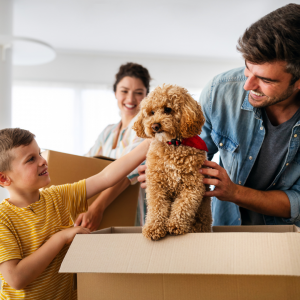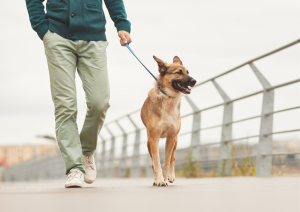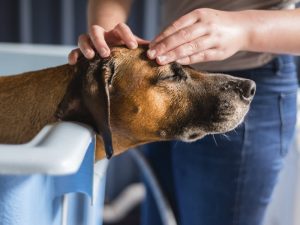
Moving to a new home can be a significant change for both you and your pets. Ensuring that your furry friends maintain a sense of routine during this transition is crucial for their well-being. In this article, we’ll explore the best practices for maintaining pet routine after moving to help you and your pets settle in smoothly.
The best practices for maintaining pet routine after moving include establishing a consistent feeding schedule, creating a dedicated pet space, maintaining regular exercise routines, providing familiar toys and bedding, gradually introducing new environments, and monitoring your pet’s behavior for signs of stress.
These tips can make a significant difference in how well your pet adapts to their new home. Keep reading to discover detailed strategies and insights on each practice to ensure a smooth transition for your beloved pets.
Establishing a Consistent Feeding Schedule
One of the most important aspects of maintaining pet routine after moving is keeping their feeding schedule consistent. Pets thrive on routine, and changes in their feeding times can cause unnecessary stress. Start by gradually adjusting feeding times before the move if necessary, aligning them with the new schedule you plan to follow in your new home.
For example, if you normally feed your dog at 7 AM and 6 PM, try shifting these times by 15 minutes each day leading up to the move until they match your new schedule. Consistency in feeding times helps pets feel secure and reduces anxiety during the transition.
Creating a Comforting Pet Space
Creating a dedicated space for your pet in the new home is essential for maintaining pet routine after moving. This space should include their bed, toys, food and water bowls, and any other familiar items that bring them comfort. Having a designated area helps your pet feel secure and gives them a sense of ownership in the new environment.
Set up this space as soon as you move in, and try to keep it in a low-traffic area of the home where your pet can retreat if they feel overwhelmed. Familiar scents from their old home, such as their bedding and toys, can also help ease the transition.
Maintaining Pet Routine After Moving: Regular Exercise
Exercise is a crucial part of your pet’s daily routine, and maintaining regular exercise routines is vital for their physical and mental health. Explore your new neighborhood to find pet-friendly parks and walking paths. This not only helps in maintaining pet routine after moving but also provides an excellent opportunity for you and your pet to become familiar with the new surroundings.
If you used to walk your pet in the morning and evening, try to keep these times consistent in the new location. Consistency in exercise routines helps pets adapt more quickly and reduces the likelihood of behavioral issues.
Familiar Toys and Bedding: The Key to Comfort
Familiar items such as toys and bedding play a significant role in maintaining pet routine after moving. Pets find comfort in familiar scents, and having these items in their new home can make a big difference in how quickly they adapt. When packing for the move, make sure to set aside a box of your pet’s favorite items to unpack first.
This small step can provide immediate comfort and a sense of normalcy for your pet amidst the chaos of moving. Additionally, keeping their toys and bedding accessible can help them feel more at home and reduce stress levels.
Gradual Acclimatization to New Environments
Introducing your pet to the new home gradually is another crucial step in maintaining pet routine after moving. Start by allowing your pet to explore one room at a time, beginning with their designated pet space. Gradually open up more areas of the home, letting your pet adjust at their own pace.
Watch for signs of stress, such as hiding, excessive barking, or changes in eating habits, and give your pet plenty of time to become comfortable. Gradual acclimatization helps pets feel more secure and reduces the likelihood of overwhelming them with too much change at once.
Watching for Stress Signals in Your Pet
Monitoring your pet’s behavior for signs of stress is essential in maintaining pet routine after moving. Common signs of stress include changes in eating or sleeping patterns, excessive grooming, aggression, or withdrawal. If you notice any of these behaviors, take steps to address them immediately.
Provide extra comfort and reassurance, and maintain as much of their routine as possible. If the stress persists, consult with your veterinarian for additional advice and support. Understanding and addressing your pet’s stress signals can make a significant difference in their overall well-being during the transition.
Bonus Tips for a Seamless Transition
In addition to the primary best practices, here are some bonus tips to ensure a smooth transition for maintaining pet routine after moving:
- Stick to Familiar Commands and Cues: Using the same commands and cues in the new environment helps your pet understand expectations.
- Routine Vet Visits: Schedule a visit with a local vet soon after the move to establish care and address any health concerns.
- Engage in Playtime: Interactive playtime can help distract your pet from stress and reinforce positive behavior.
By implementing these strategies, you can ensure that your pet adjusts smoothly to their new home, making the transition easier for both of you.
FAQ: How can I help my pet adjust to a new neighborhood after moving?
To help your pet adjust to a new neighborhood, start with short, frequent walks to familiarize them with the area. Let them explore at their own pace and gradually introduce them to neighbors and other pets. Maintain a consistent routine for feeding, exercise, and playtime to provide a sense of normalcy. Use familiar toys and bedding to help them feel more at ease. Regular positive interactions and reassurance can significantly aid in their adjustment.
Ensure a Smooth Transition for Your Pet
Ensuring a smooth transition for your pet during a move is crucial for their well-being and happiness. By establishing a consistent feeding schedule, creating a dedicated pet space, maintaining regular exercise routines, providing familiar toys and bedding, gradually introducing new environments, and monitoring for stress signals, you can help your pet adapt comfortably to their new home. These best practices for maintaining pet routine after moving will make the process less stressful for both you and your furry companion.
At Dave Ozubko Real Estate Team, we are committed to helping you find the perfect home in Edmonton’s most pet-friendly neighborhoods while also supporting pet welfare through our #RealtortotheRescue initiative. Choosing us for your real estate needs means you’re also contributing to local dog fostering and adoption efforts, as a portion of every sale is donated to these causes. Let us assist you in finding a home where both you and your pets can thrive, ensuring a smooth transition and a happy new beginning.

